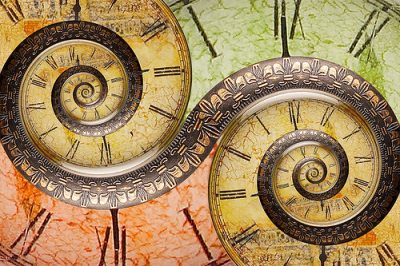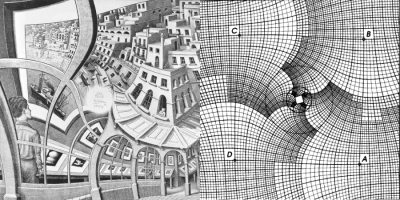On Subblue’s blog I stumbled upon his Adobe Pixel Blender filter that recreates Escher’s Droste effect.
First a few words about Adobe Pixel Blender which was new to me. It is a toolkit that allows you to write filters in a C-like language, that are compiled and executed on either the GPU or CPU. They can be used in Photoshop, After Effects and even Flash 10 – making it possible to create very powerful Flash content. It is interesting to see that general-purpose computing on graphics processing units now are becoming mainstream, and no longer just an academic exercise.
The story behind Escher’s Droste effect is very interesting. It refers to the particular transformation Escher used in his ‘Prentententoonstelling’ lithograph (pictured above). The mathematics behind the picture was unraveled by a team of Dutch mathematicians in 2003 (it is ‘…drawn on a certain elliptic curve over the field of complex numbers…’) and is excellently described on their website. Several other software implementations exists, including one for GIMP and a plugin for Paint.net.

Double Droste Clock by fpsurgeon
Above is a modern example of using this effect, found on the Escher’s Droste Print Gallery Flickr group. By coincidence, the structure of this particular picture reminds me of the very first structure synth image I created.
To be honest, I never liked Escher’s original painting much. I’ve always found it to be too mathematical and fabricated and not very interesting. But the math behind it is interesting and the Flickr group really contain many great pictures.
Be sure to check out Subblue’s many excellent examples of his filter (note the video at the bottom!).
